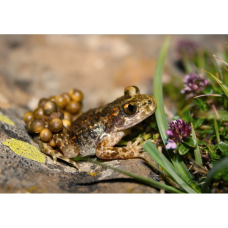Evolution and biogeography in Parablechnum (Blechnaceae): recent advances and upcoming challenges
Understanding the evolutionary history of spore-dispersed plants is critical for developing a balanced view of land plant evolution. The Blechnaceae is globally distributed and amongst the youngest fern families, making it an excellent case study for exploring rapid radiations in ferns. Within this family, Parablechnum is the most diverse genus, with ca. 65 species with diversity centers in the Neotropics and Australasia. Although a historic Gondwanan vicariance could explain this distribution, the available dating indicates that the genus had a very rapid radiation well after the separation of Gondwana, which would support that the distribution is driven mainly by long-distance dispersal. However, reaching a conclusion on the phylogeography of the genus has been hindered by the lack of resolution of previous phylogenetic studies as well as unclear taxonomic delimitation due to low representation in herbaria.
We are undertaking an integrative approach that combines morphoanatomical studies with molecular phylogenetics. Our first results have shown that the most interesting morphoanatomical characters at the taxonomic level are the anatomy of the fertile pinna and the macro- and microornamentation of the spores. The examination of these characters is allowing us to refine the current taxonomic treatment. Likewise, the preliminary phylogenetic reconstructions show an evolutionary landscape that is more complex than previously expected. While the phylogenetic signal supports, to a certain degree, the existence of a Neotropical clade, it is doubtful that vicariance alone can explain the current distribution. In turn, these results are compatible with the occurrence of infrequent LDD events.
Far from being a static lineage fitting a simple paradigm, the Parablechnum case study reinforces that events associated with evolutionary dynamism in land plants, such as rapid radiations and diverse biogeographic divers, also occur in ferns.










